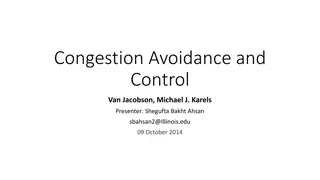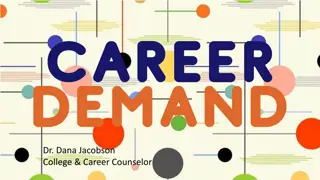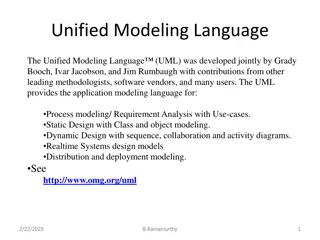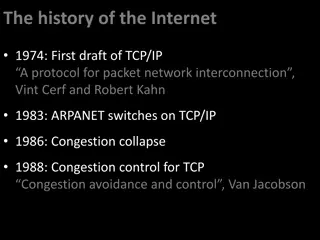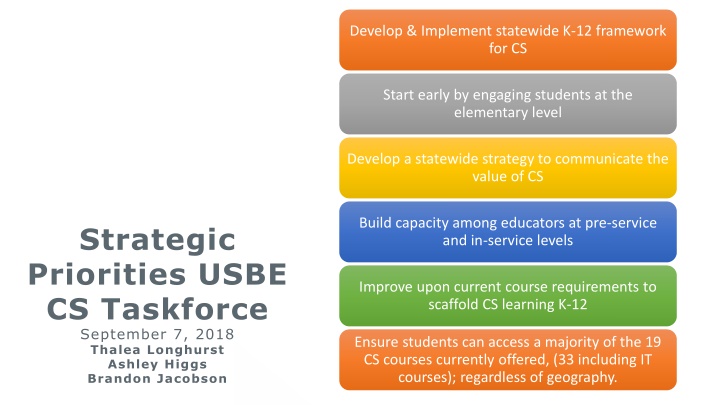
Statewide K-12 Framework for Computer Science Education
"Developing and implementing a comprehensive statewide K-12 framework for computer science education in Utah to start early engagement and ensure access to diverse CS courses for all students, aiming to enhance computational thinking skills at each grade level."
Download Presentation

Please find below an Image/Link to download the presentation.
The content on the website is provided AS IS for your information and personal use only. It may not be sold, licensed, or shared on other websites without obtaining consent from the author. If you encounter any issues during the download, it is possible that the publisher has removed the file from their server.
You are allowed to download the files provided on this website for personal or commercial use, subject to the condition that they are used lawfully. All files are the property of their respective owners.
The content on the website is provided AS IS for your information and personal use only. It may not be sold, licensed, or shared on other websites without obtaining consent from the author.
E N D
Presentation Transcript
Develop & Implement statewide K-12 framework for CS Start early by engaging students at the elementary level Develop a statewide strategy to communicate the value of CS Build capacity among educators at pre-service and in-service levels Strategic Priorities USBE CS Taskforce September 7, 2018 Thalea Longhurst Ashley Higgs Brandon Jacobson Improve upon current course requirements to scaffold CS learning K-12 Ensure students can access a majority of the 19 CS courses currently offered, (33 including IT courses); regardless of geography.
Computers and software are changing everything Therefore, Utah s Vision: Each student in secondary public schools will have access to robust and varied computer science courses by 2022. All students will enter secondary schools with exposure to computational thinking and competencies in digital literacy. This begins in our elementary schools with competencies in keyboarding, appropriate and responsible use of technology, and basic coding principles.
Develop & Implement statewide K-12 framework for CS Start early by engaging students at the elementary level Strategic Priorities USBE CS Taskforce Step 1 Develop a statewide strategy to communicate the value of CS Build capacity among educators at pre-service and in-service levels Improve upon current course requirements to scaffold CS learning K-12 Ensure students can access a majority of the 19 CS courses currently offered, (33 including IT courses); regardless of geography.
Develop & Implement statewide K-12 framework for CS Definitions & Practices help understand Priorities CS Grade by Grade Framework Elementary Recognizing Patterns, Problem Solving, Representation, and Sequencing Middle/Jr. High Building upon Elementary Definition. The thought process involved in expressing solutions as computational steps or algorithms that can be carried out by a computer. Recognizing, Developing, Creating, and Testing are added to the practices of the definition. Computer Science is about logic, problem solving, and creativity High School Building upon the Middle/Jr. High Definition. Computational thinking practices Use, Modify, Create, Refine, Test, and Analyze concepts.
Develop & Implement statewide K-12 framework for CS Model other state plans
K-12 Computer Science Framework States with K-12 CS Framework States without K-12 CS Framework Only 21 states (2018) have created K-12 computer science Frameworks. Utah developed Framework concepts usingthe general framework from: CS Teacher Association (CSTA), k12cs.org/, and other state plans.
Other States Other Supporting efforts Did you hear the news? Aug 30, 2018 Sept 7, 2018 Code.org, CSTA+, and Pluralsight to provide PD, curriculum, content, and added skill development to national educators including $1,300,000 to support underrepresented and rural promotion of CS Arkansas Governor Asa Hutchinson announced this week that all 528 Computer Science teachers in the state of Arkansas will receive CSTA+ membership! Valued at $50 a teacher = $26,000
CSTA offering For Computer Science educators Reinforce Computer Science concepts by aligning to national Computer Science Certification exams Pluralsight Maps to 5 main content categories: One CSTA Offering Impacts of computing Algorithms & computational thinking Programming Data Computing systems & networks Designed to empower educators in preparing for the Praxis Praxis exam exam, increase their comfort level with fundamental programming concepts, and improve their lesson preparation
Utahs Vision Simplified: Each student should have an opportunity in their school to learn about: algorithms, how to make apps, and how the internet works.
Implementation of Framework Step 2 Develop & Implement statewide K-12 framework for CS Start early by engaging students at the elementary level Integrating computer science-related practices into early childhood education is not a departure from traditional notions of developmentally appropriate practice; rather, computer science supports play-based pedagogy, extends what educators are already doing in their classrooms, and guides young learners to notice, name, and recognize how computing shapes their world. In this way, pre- K brings computer science to life, preparing kids for the larger K 12 framework. Computer science is well-suited for early childhood education as it offers a learning environment where young children can play to learn while learning to play (Resnick, 2003).
Implementation Implementation Step 2 Step 2 Cont. Utah elementary schools offering CS content Cont. Based off a survey: The responses demonstrate the portion of unique elementary schools that responded to the survey as a portion of the total number of public elementary schools across the state. Only 10% of these schools indicated that they were required to teach CS, demonstrating that those currently teaching CS are largely doing so either with the encouragement of their administration (60.4%) or simply of their own accord (29 6%) Develop & Implement statewide K-12 framework for CS Start early by engaging students at the elementary level
Implementation Implementation Step 2 Step 2 Cont. Cont. All respondents were asked to rate how important they thought it was that all students receive CS instruction during elementary school, whether the school reported teaching it or not. 75.3% of respondents felt that it was very or extremely important that CS be taught in elementary school. What s more, 85.7% felt that CS should be taught sometime in K-12. Develop & Implement statewide K-12 framework for CS Start early by engaging students at the elementary level
What CHALLENGES do elementary teachers face teaching CS? While successes dealt primarily with students, challenges in teaching elementary CS focused on administrative issues: time, funding, integrating CS within core subjects, and creating a shared vision. Top challenges faced elementary CS educators* Implementation Implementation Step 2 Step 2 Cont. Cont. Challenge Definition % Time Insufficiency or abundance of time necessary to teach subject 44.75% Training The need for additional professional development and teacher education and/or experience 31.49% Funding Resources such as money to pay for coding related costs 18.78% Technology & Equipment Resources such as computers, robots, or technology for the coding 11.60% Implementation Preparing to, implementing, or integrating the coding in a schedule, program, or system 9.94% Develop & Implement statewide K-12 framework for CS Start early by engaging students at the elementary level Shared vision The lack/presence of a shared valuation for coding in the classroom 8.29% Core Comments about the core curriculum or requiring coding in curriculum(e.g., adding coding to the core) 7.18% * Reported by at least 5% of the time
Implementation continued Three Career Pathways within IT and CS for 2018- 2019 Click Here Programming and Software Development Information Systems Web Development CyberSecurity Linux A+ Computer Repair Network Database Cloud Computing Etc. Computer Science Principles Computer Programming Algorithms and Data Game Development Etc. Web Development HTML5 Mobil Development Intro to IT Database Etc. CyberSecurity (Ethical Hacking) Cyber Forensic Cloud Computing Intro to IT Etc.
Implementation continued Four Career Pathways within IT and CS for 2019-2020 Programming and Software Development Information Systems Web Development CyberSecurity Linux A+ Computer Repair Network Database Cloud Computing Etc. Computer Science Principles Computer Programming Algorithms and Data Game Development Etc. Web Development HTML5 Mobil Development Intro to IT Database Etc. CyberSecurity (Ethical Hacking) Cyber Forensic Cloud Computing Intro to IT Etc.
Implementation continued Five courses for Middle/Jr. High including Computer Science or coding concepts. Concern that a gap in CS courses existed in the middle level has now been mitigated with training and curriculum relevant to the courses. STEM Concepts 6-8 grade level Creative Coding 6-8 grade level Intro to Python 1 7-8 grade level Intro to Python 2 8 grade level Digital Literacy Required course for Middle/Jr. high advancement
Where are we? Step 3 - Data The goal is to turn data into information, and information into insight. Carly Fiorina
Enrollment in all high school CS courses increased annually by more than 5,000 students each year for three consecutive years until 2017- 2018, when enrollment decreased by almost 1500 students. Among the five most popular courses (covering 95% of all CS related courses), only Web Development 1 and Computer Science Principles saw enrollments in 2017-2018. A change in course coding may have contributed to the increase in Web Development 1, whereas the College Board s introduction of the AP Computer Science Principles exam in 2017 may have increased Computer Science Principles course. increases in interest in the
While fewer than 500 Utah students take the College Board Advanced Placement Computer Science (AP CS) exams each year, this data serves as a useful source of long-term trends. There have been three AP CS exams: AP Computer Science A (statewide data available 1998-present), AP Computer Science AB (1998-2009), and AP Computer Science Principles (2017-present). Starting in 1999, Utah experienced a dip in students taking AP CS exams. In fact, May 2017 was the first year that we had more Utah students taking AP CS exams than in 1999. Why is this a huge change?
Solving the diversity problem begins in K-12 Software workforce K-12 computer science University computer science Women who try AP Computer Science in high school are 10X more likely to major in it, and Black and Hispanic students are 7X more likely. Sources: College Board, National Center for Education Statistics, Bureau of Labor Statistics
Percentage of Students Enrolled in High School Computer Science Classes In Utah Student Population Demographics 2013 2014 2015 2016 2017 2018 Female 49% 17.6 18.7 20.7 27.0 31.5 33.6 American Indian 1% 0.8 1.0 1.6 1.7 1.2 1.3 Asian 2% 4.2 3.3 3.0 3.4 2.7 2.7 Black/African American 1% 1.1 1.3 1.3 1.4 1.7 1.7 Hispanic/Latino 17% 12.6 14.2 15.3 16.9 17.4 20.3 Multi race 3% 1.5 2.0 2.4 2.5 2.5 2.4 Pacific Islander 2% 0.9 1.0 1.1 1.4 1.5 1.6 White 75% 78.9 77.2 75.3 72.7 73.1 70.0
Who Is Teaching CS?
Schools teaching CS vs. overall number of schools 700 50% 662 45% 44% 600 40% 500 35% 30% 400 25% 23% 300 21% 20% 20% 188 185 15% 200 140 This is the This is the issue we are issue we are solving with solving with the taskforce the taskforce 10% 82 100 44 5% 25 5 0 0% K-12 Elementary Middle/Jr. High High School Qty of Schools Schools Teaching CS Percentage % for 2018
Teacher Funding towards Endorsement SB 93 400 Impact of Teacher Compensation for Endorsement Blue Data 1986-2015 (30 Years with no legislative money to earn endorsement recorded) Orange Data (since SB93) 2016-2018 (2 Years with $400,000 towards teachers who earn endorsements) 353 350 300 250 205 200 157 150 117 100 70 56 56 38 50 0 Overall IT Endorsements Earned Schools with Endorsed Educators LEAs with Endorsed Educator Educators with CS Endorsement Pre2016 - 30 years of data Post2016 - 2 years of data
Develop & Implement statewide K-12 framework for CS Start early by engaging students at the elementary level Strategic Priorities USBE CS Taskforce STATE PLAN Develop a statewide strategy to communicate the value of CS Build capacity among educators at pre-service and in-service levels Improve upon current course requirements to scaffold CS learning K-12 Ensure students can access a majority of the 19 CS courses currently offered, (33 including IT courses); regardless of geography.











